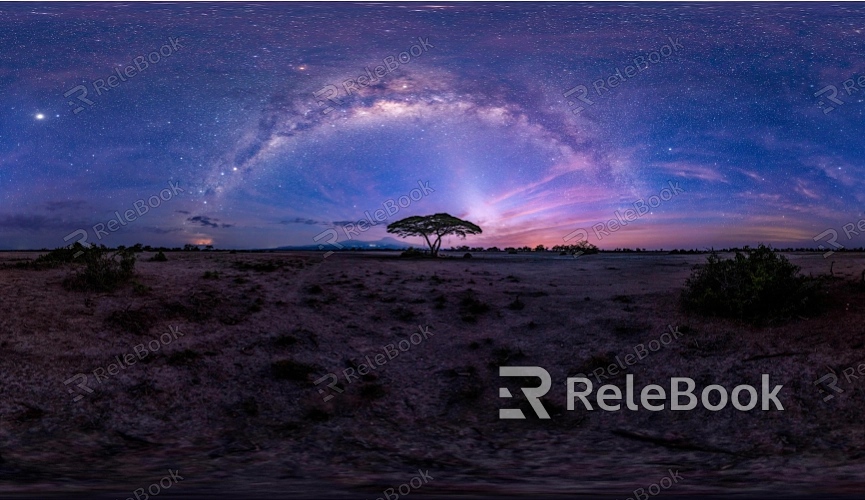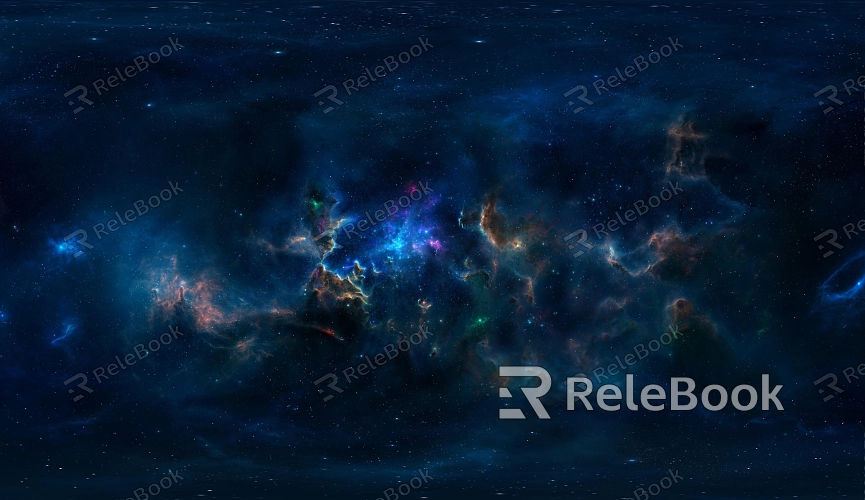How to Fix Blurry HDR Skybox Textures in 3D Rendering
In 3D software like Blender, 3ds Max, and Cinema 4D, HDR files are frequently used to create realistic lighting and skybox effects. However, blurry skybox textures in the final render can diminish the overall visual quality and compromise scene details. This article will explore common causes of blurry HDR skybox textures and provide effective solutions to help designers achieve sharper skybox results in their renders.

1. Understanding the Relationship Between HDR Files and Resolution
HDR (High Dynamic Range) files contain a wide range of color and brightness information, often used to simulate realistic lighting environments. However, the resolution of an HDR file is critical to the final render quality.
Low HDR resolution: If the HDR file has a low resolution, skybox textures may appear blurry when scaled up. Make sure to select HDR files with sufficiently high resolution to avoid losing detail.
Fitting the scene size: Ensure the HDR texture is appropriately scaled to the 3D scene. For larger scenes, lower-resolution files can lose clarity in the rendering process.
2. Adjusting Texture Filtering and Anti-Aliasing Settings
In 3D rendering, texture filtering and anti-aliasing directly affect image quality. Blurry HDR skyboxes can result from improper filtering and AA settings.
Texture filtering types: Many software programs offer various texture filtering options such as bilinear, trilinear, and anisotropic filtering. Enabling anisotropic filtering can improve texture clarity at sharp angles, reducing blurriness.
Anti-aliasing settings: Enabling anti-aliasing (AA) can smooth out jagged edges in HDR textures. Popular methods include FXAA and MSAA, which can be selected based on render complexity and hardware capability.
3. Adjusting UV Mapping and Projection Techniques
Blurry HDR skybox textures may sometimes stem from improper UV mapping or projection methods. Uneven distribution of textures on models can cause localized blurring.
Check UV mapping: Ensure that UV mapping is accurate and free of stretching or distortion. Poor UV coordinate distribution can result in certain areas of the HDR texture becoming blurred.
Select the correct projection method: Different 3D software offers multiple projection methods such as spherical and cubic projection. Choose the method that best fits the HDR skybox to avoid image distortion.
4. Tuning Exposure and Gamma Settings
Sometimes, incorrect exposure and gamma settings can make HDR textures appear blurry or unnatural. Optimizing these parameters can significantly enhance texture sharpness.
Exposure adjustment: Overexposed or underexposed textures can lose detail and appear blurry. Adjusting exposure to an appropriate level helps maintain texture clarity and detail.
Gamma correction: Gamma affects the overall brightness and smoothness of an image. Proper gamma settings ensure that details in bright and dark areas of the HDR file are preserved, preventing texture blurring.

5. Using High-Resolution HDR Files and Optimizing Them
To save memory or rendering time, designers might opt for lower-resolution HDR files. However, this is a primary cause of blurry skyboxes. To resolve this issue, it's essential to use high-resolution HDR files and optimize them properly.
Choose high-quality HDR files: Ensure the resolution of the HDR file is at least 4K or higher to capture sufficient detail, especially when the skybox covers a large area of the scene.
File optimization: Even with high-resolution HDR files, optimize the scene to reduce resource consumption by lowering unnecessary polygons or adjusting rendering settings.
6. Tweaking Rendering Engine Sampling Settings
The sampling settings in your rendering engine can affect the quality of the final output. If the sampling rate is too low, HDR skyboxes may appear blurry or noisy.
Increase sampling rate: Raising the sampling rate improves the overall detail and quality of the image, reducing the chances of blurriness. Adjust the sampling rate to the highest possible level without significantly slowing down the rendering process.
Denoising: Some render engines include built-in denoising features. Applying denoising appropriately can help retain details while reducing noise, thus improving the clarity of HDR textures.
7. Avoid Over-Compressing HDR Files
In efforts to save storage space, designers might compress HDR files, but over-compression can lead to blurry textures and a loss of detail. Maintaining high-quality HDR files without excessive compression is key to improving skybox clarity.
Use lossless compression: If compression is necessary, opt for lossless compression formats to ensure the image quality remains intact.
By following these strategies, 3D designers can effectively address blurry HDR skybox texture issues. Choosing the right HDR file resolution, optimizing render settings, and using proper UV mapping and texture filtering techniques are critical steps to ensuring clear and detailed rendering results.
If you're looking for high-quality HDR images, 3D textures, SketchUp models, or 3ds Max models to use in your projects, Relebook is an excellent resource. Downloading textures and models from Relebook and importing them into your 3D modeling software can significantly enhance the quality of your work.

